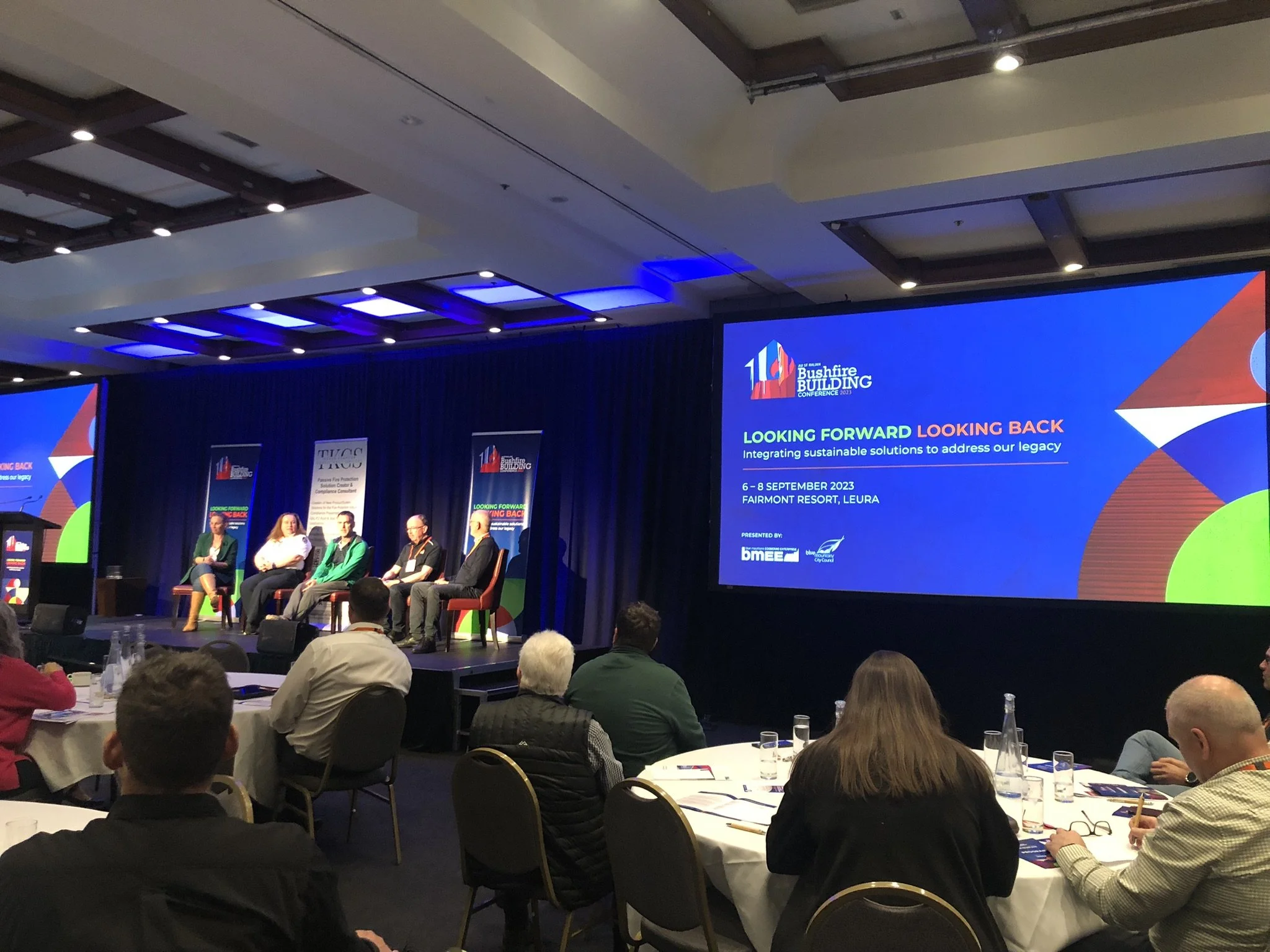Building for Resilience: Insights from the 2023 Bushfire Conference
In September 2023, the annual Building Bushfire Conference brought together survivors, experts, and advocates to share vital information on building resilience in the face of bushfires. The conference featured innovative solutions and practical advice for retrofitting homes, enhancing personal safety, and reducing environmental impact. Here are some of the key takeaways:
1. A Resilience App for Safer Homes
A game-changer for those in bushfire-prone areas, the "Bushfire Resilience Rating Home Self-Assessment" app offers recommendations on retrofitting options. The app's impact goes beyond safety—it's backed by National Australia Bank (NAB), which is willing to offer loan discounts to those with higher ratings. Lower interest rates and insurance premiums are enticing incentives. Download the app to start fortifying your home.
2. The Power of Bushfire Shutters
Imagine a media room with the ability to block out natural light, offering the perfect cinematic experience. Bushfire shutters not only enhance safety but also provide everyday benefits like light control and privacy. They're a valuable addition to any home.
3. Remembering the 2019 Bushfires
The motivation to retrofit your home is clear: protecting your property, lowering interest rates, reducing insurance premiums, and preventing the spread of fires to your neighbors' homes. The memories of the 2019 bushfires are a compelling reminder of the importance of preparedness.
4. Understanding Human Behavior in Bushfires
Duncan Scott Lawson shed light on the human behavior side of living through a fire experience. People often need a trigger to act, which might involve seeing, hearing, or smelling fire. Surprisingly, many individuals tend to trust their neighbors over expert Rural Fire Service (RFS) advice. Understanding the basics, such as the fact that fires run faster uphill and that grass fuels fire more than forests, is crucial. The Flame Zone BAL rating signifies ember risk, not just flame contact. Importantly, while many focus on protecting their assets, adequate evacuation route planning is often overlooked.
5. The Value of Non-Combustible Paths
Graham Douglas, an industry expert and veteran, delivered a blunt but crucial piece of advice: "STOP the urge to plant a garden bed next to your house." Instead, plan a non-combustible path around your home. This simple change can significantly enhance your property's safety.
6. Retrofitting for Bushfire and Energy Efficiency
Dr. Green emphasized the correlation between retrofitting for bushfires and energy efficiency. Remarkably, bushfire retrofits can significantly reduce carbon emissions. The top three energy efficiency upgrades with the most impact on carbon emissions are replacing your hot water system with a heat pump, upgrading aging windows to high-performance double or triple glazed ones, and considering significant insulation upgrades when replacing cladding on your house.
7. Effective Sprinkler Design
Research conducted at the University of Wollongong highlighted the most effective sprinkler design for achieving bushfire protection for external walls—flat fan sprinklers mounted on eaves facing towards the wall. This efficient design can enhance your home's fire resilience.
The 2023 Building Bushfire Conference provided valuable insights and practical solutions for homeowners looking to build resilient properties, enhance safety, and reduce their environmental impact. These lessons are not just for surviving bushfires but also for creating more sustainable and efficient homes. By taking these recommendations to heart, you can better protect your loved ones and your property, all while making environmentally conscious choices.

